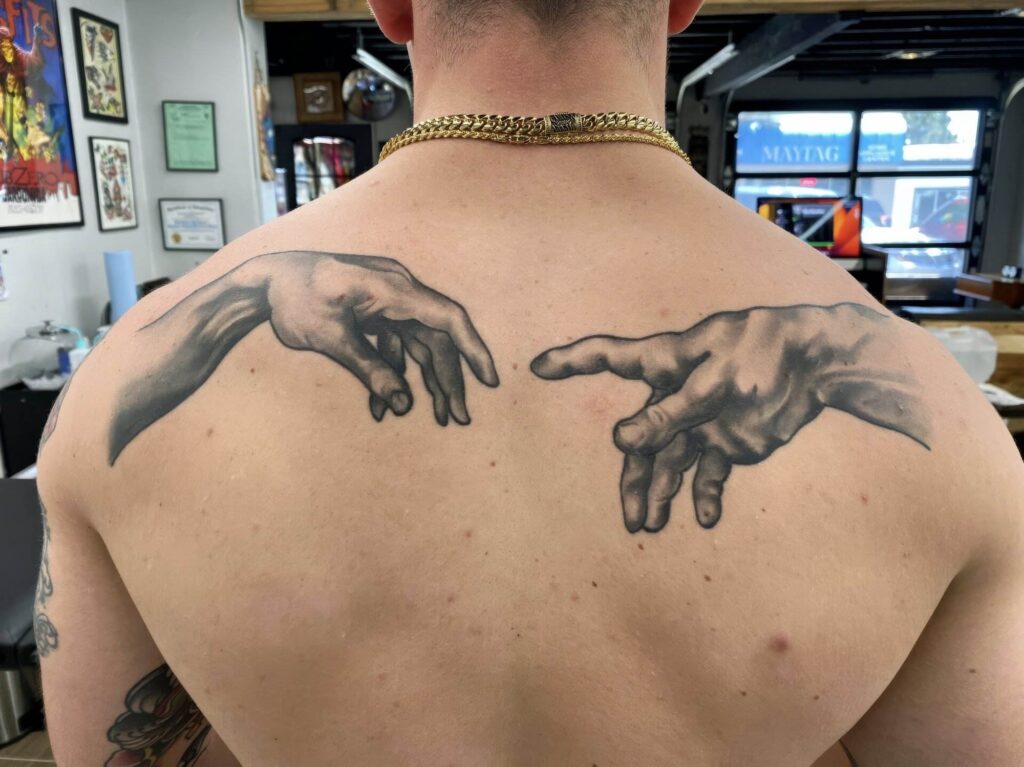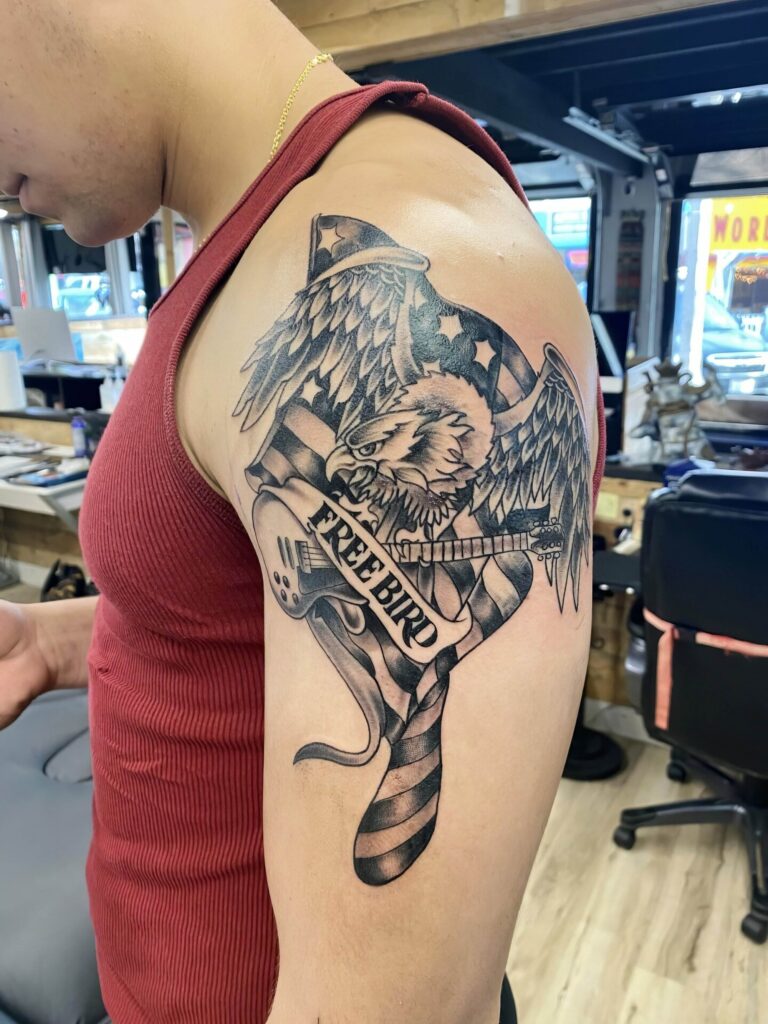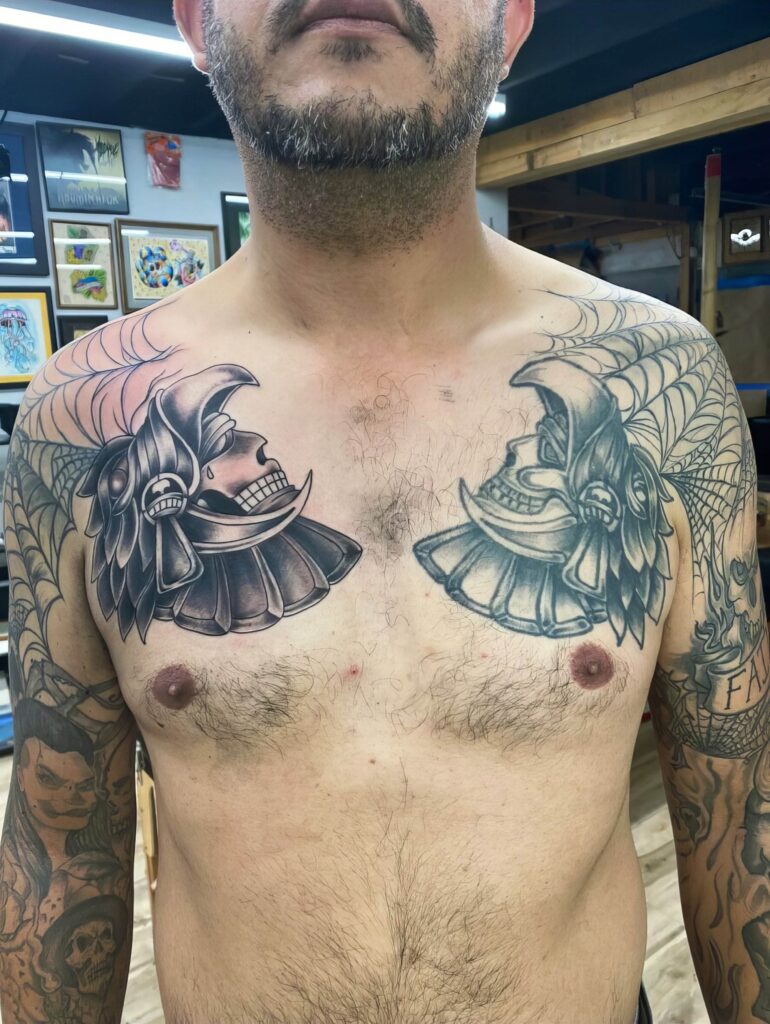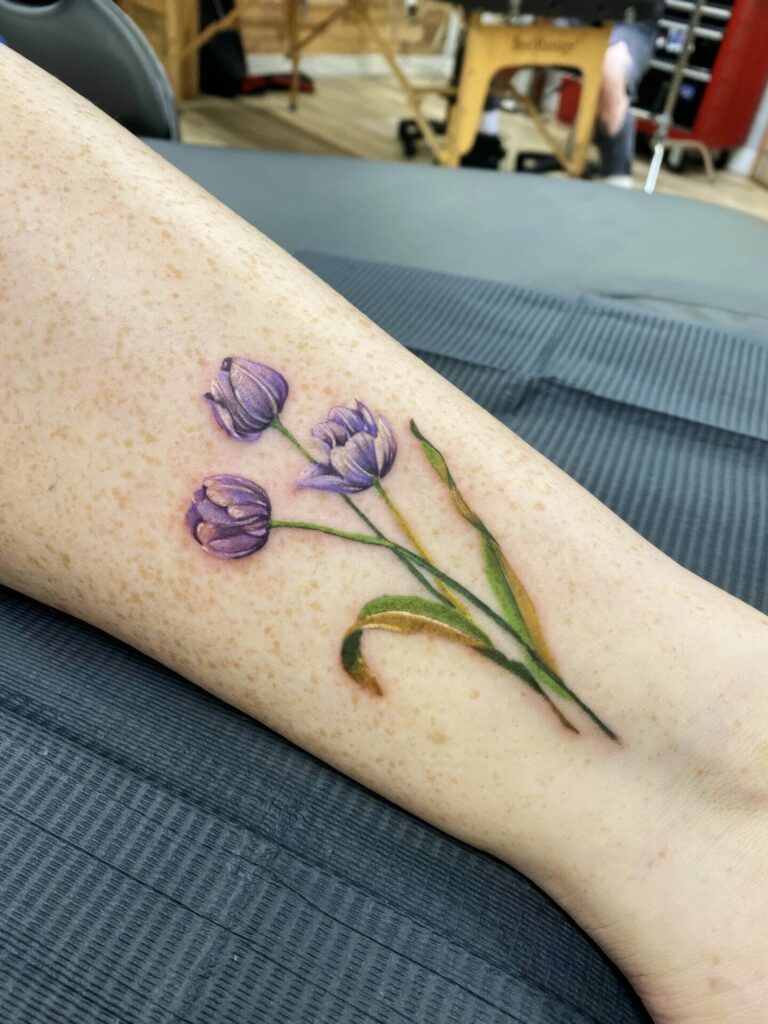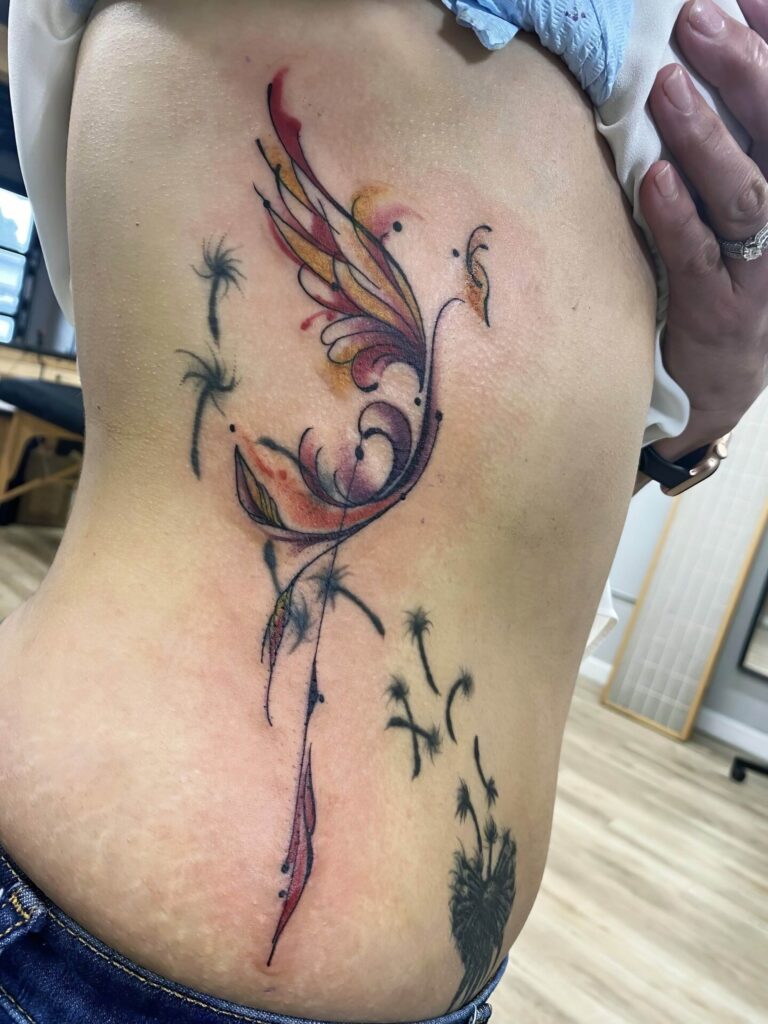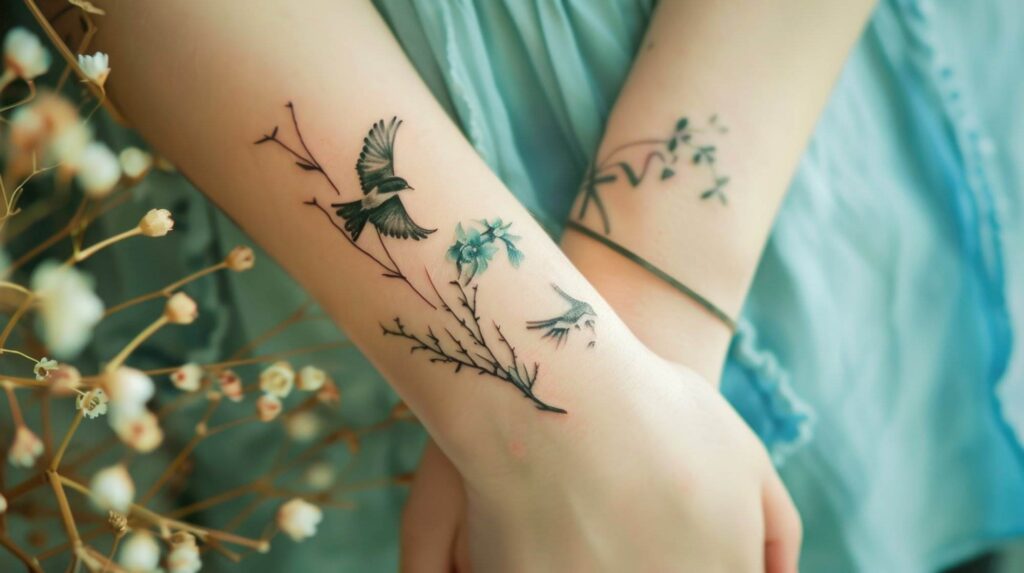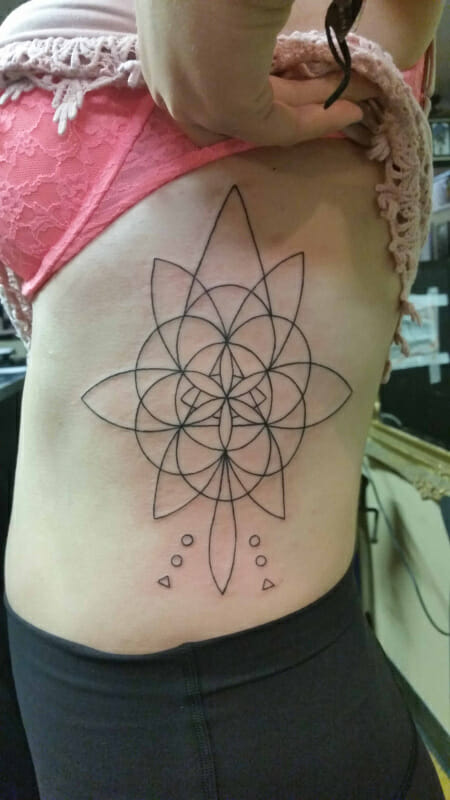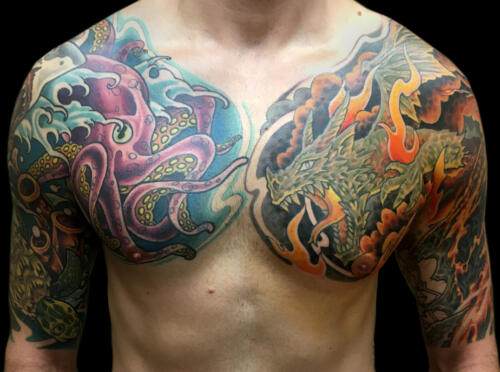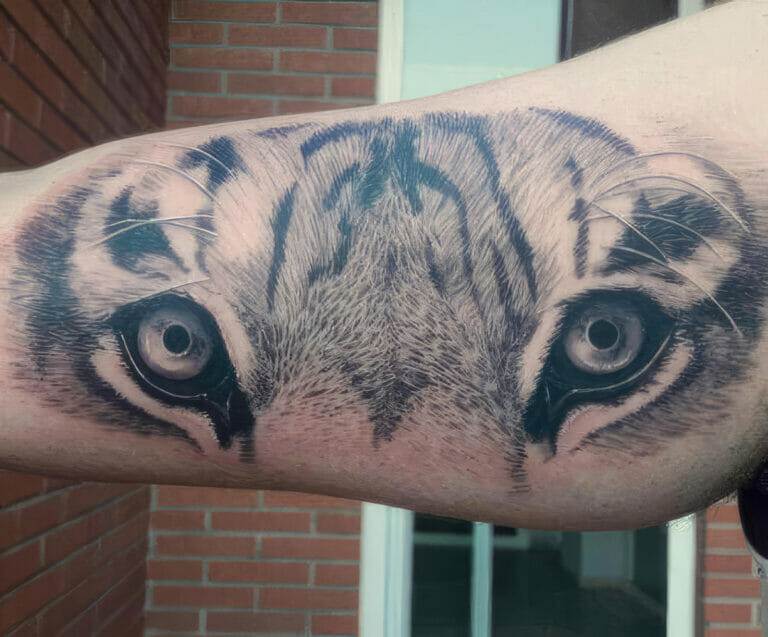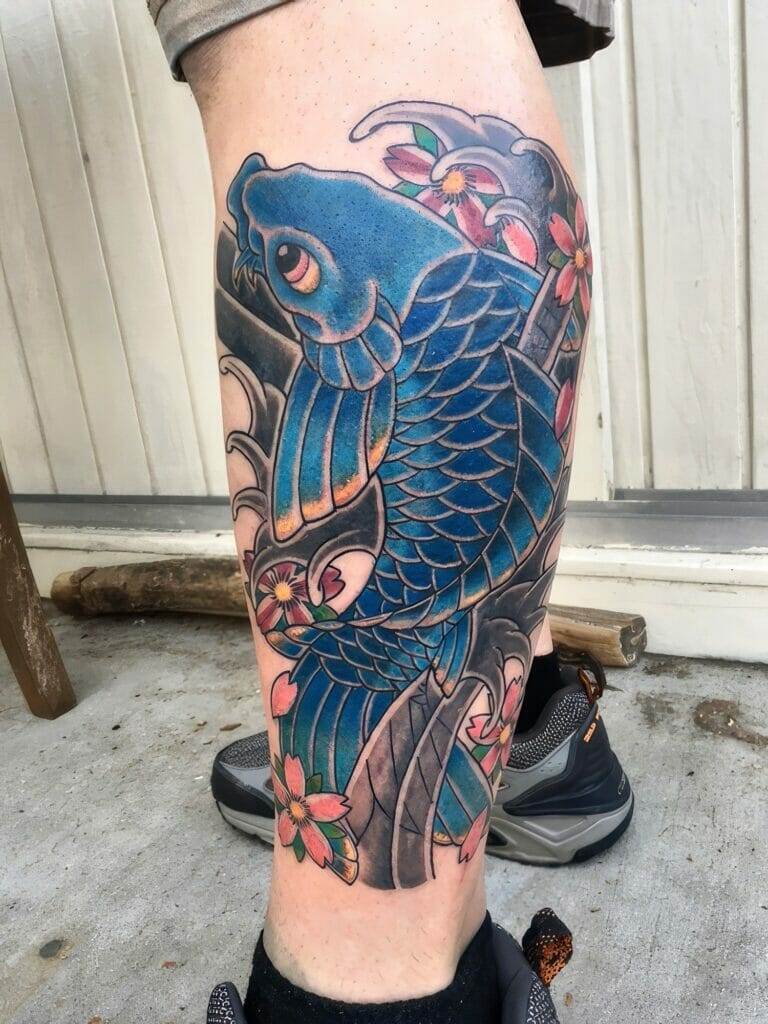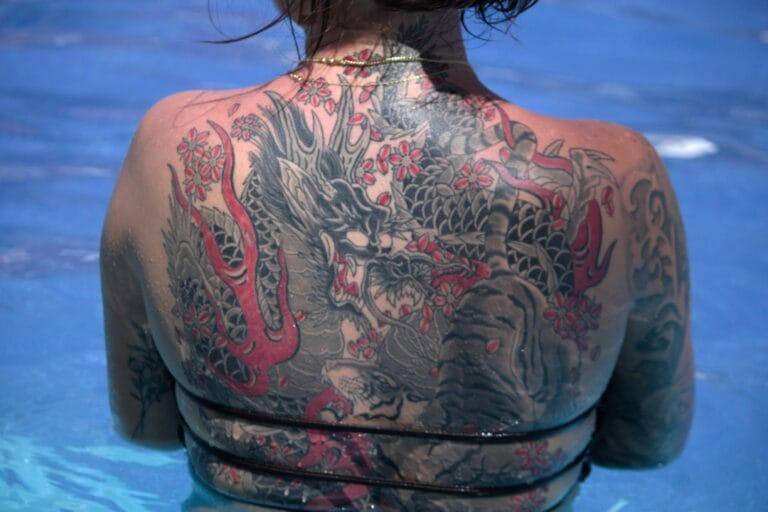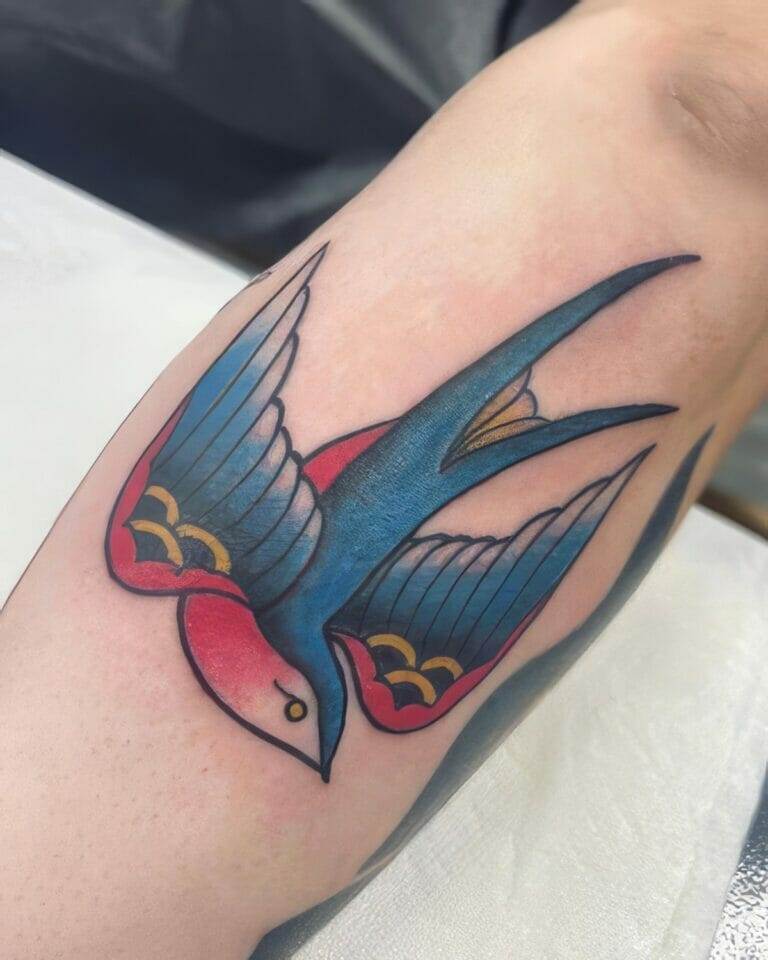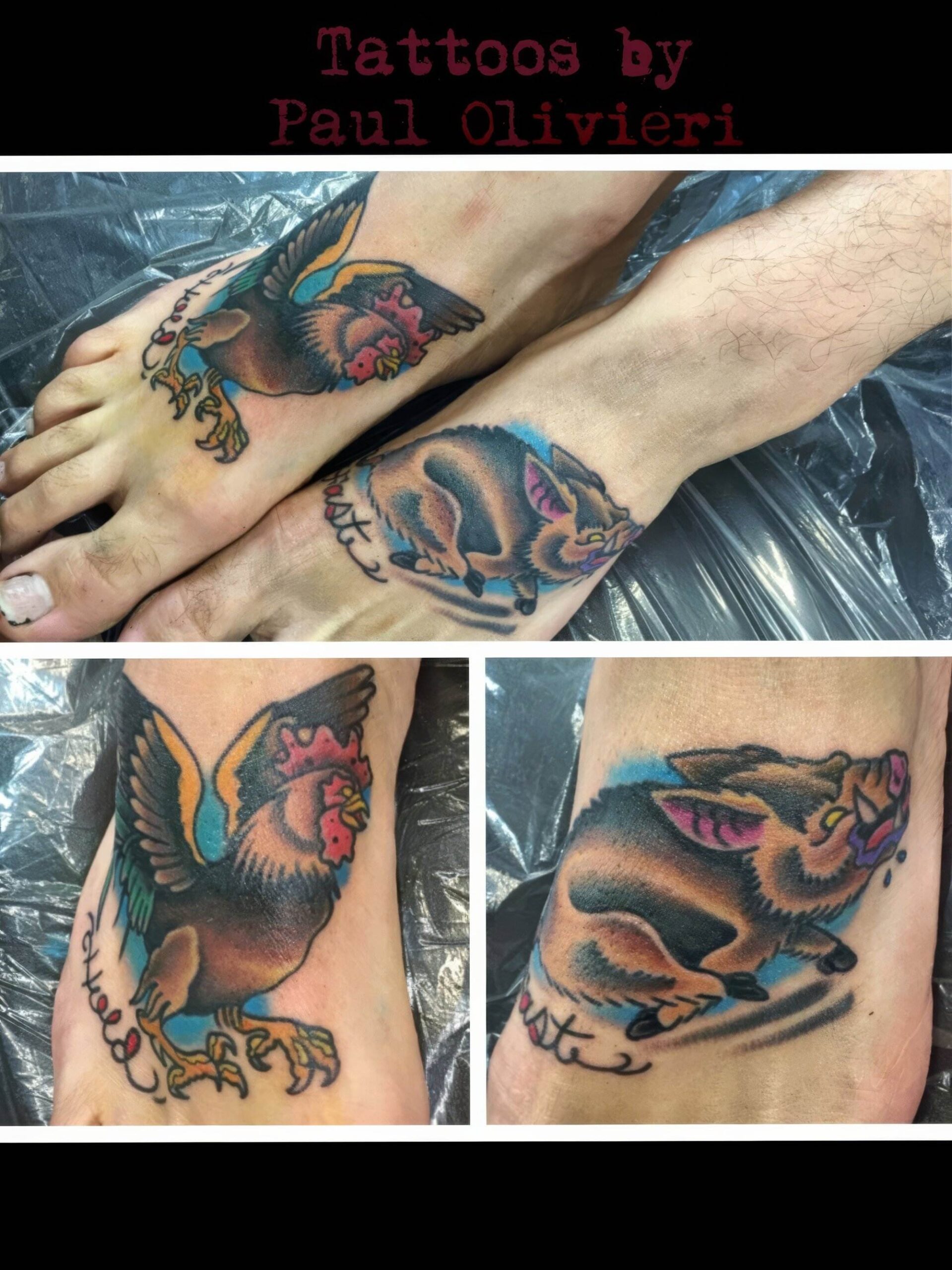
Introduction
Brief History of Tattoos
Tattoos have a rich and varied history, encapsulating cultural significances across different eras and civilizations. Dating back over 5,000 years, the earliest evidence of tattoos has been found on mummies in ancient Egypt, showcasing not only artistry but also a connection to beliefs and identity. Historically, tattoos served various purposes, such as:
- Ritualistic: In many cultures, tattoos were believed to have spiritual meanings or protective qualities.
- Social Status: Tattoos often indicated rank, tribal affiliation, or accomplishments within a community.
- Punitive Measures: Some societies branded prisoners or marked individuals as a form of punishment.
Over time, tattoos evolved from symbols of tribal identity to forms of modern self-expression, influenced by numerous cultural shifts and artistic styles.
Importance of Choosing the Right Spot
When it comes to tattoos, the design isn’t the only critical aspect—where you place it is equally essential. The placement can affect visibility, pain levels, and even the perception of the tattoo itself. Here are several considerations for selecting the perfect spot:
- Visibility: Do you want your tattoo to be easily seen or more discreet?
- Pain factors: Some areas of the body, like the ribs or feet, may be more painful than others, setting the stage for your experience.
- Skin Sensitivity: Your skin type and sensitivity can influence how well a tattoo holds over time.
Choosing the right spot is often a reflection of personal identity and lifestyle, making this decision a fundamental element of the tattoo journey.
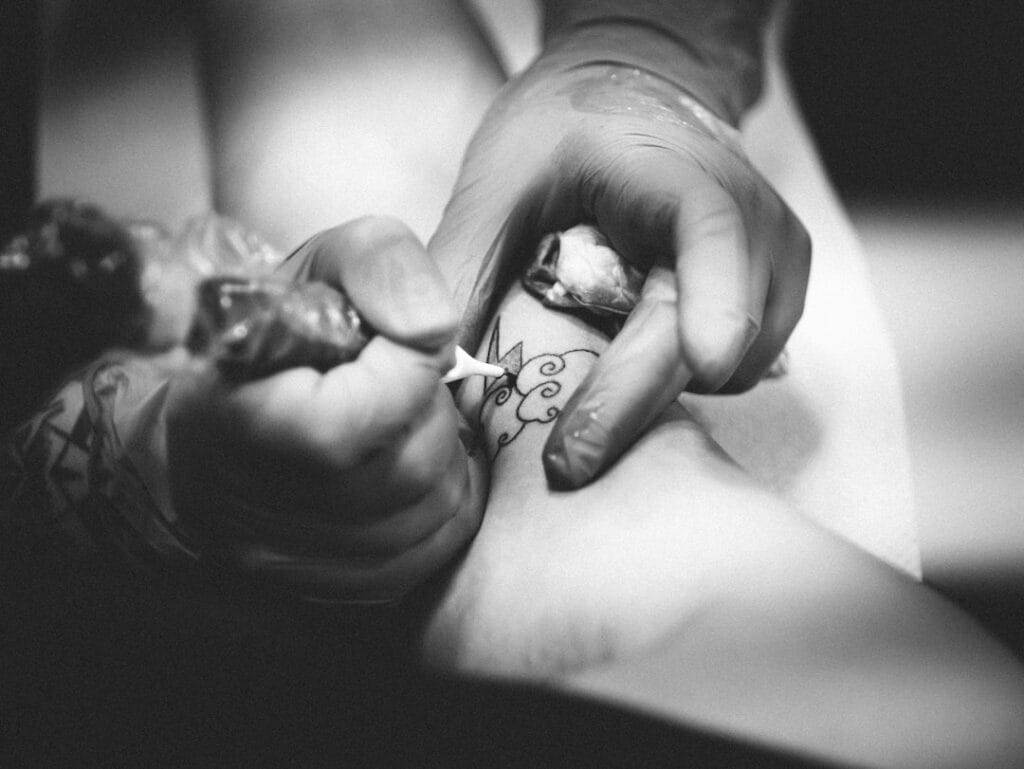
Factors to Consider
Pain Tolerance
When contemplating a tattoo, understanding your pain tolerance is crucial. Each person experiences pain differently, which can significantly influence your overall tattoo experience. Some body areas, like the upper arms or thighs, typically face less discomfort, while others, such as the ribcage or spine, can be quite intense. Here’s what to keep in mind regarding pain tolerance:
- Individual Variation: Everyone’s pain threshold varies; what feels unbearable for one person may be just a quick sting for another.
- Previous Experiences: Reflect on prior experiences with pain. If you’ve had needles or piercings before, that may give you an indication of your tolerance level.
- Tattoo Size and Duration: Larger tattoos often require longer sessions, which can amplify discomfort.
Skin Sensitivity
Skin sensitivity is another pivotal factor while deciding on tattoo placement. Individuals with sensitive skin can experience heightened reactions to the tattooing process, and this can affect healing and comfort. Consider these aspects:
- Allergic Reactions: Nickel in tattoo inks can trigger allergies in some; doing a patch test is worth considering.
- Skin Condition: Conditions like eczema or psoriasis can make certain areas more prone to irritation, thus complicating the healing process.
- Aftercare Needs: Sensitive skin may require more diligent aftercare to prevent infection and ensure proper healing.
Be sure to consult with a professional to tailor a plan that accommodates your unique sensitivities, ensuring a positive tattoo experience.
Popular Tattoo Locations
Arm
The arm is one of the most popular locations for tattoos, and it’s easy to see why. This versatile canvas allows for a variety of designs, from small symbols to elaborate scenes. Whether you opt for a bicep, forearm, or wrist tattoo, each area offers unique benefits:
- Visibility: Tattoos on the arm can be easily shown off or covered up with clothing based on your preferences.
- Pain Level: Generally, the arm is considered a moderate- to low-pain area, depending on the specific placement.
- Design Space: The varying sizes of arm sections provide ample room for intricate details or bold statements.
Many people choose the arm for meaningful quotes, remembering loved ones, or even showcasing personal achievements.
Back
The back is another sought-after spot, often chosen for its larger expanse which accommodates extensive artwork. Some advantages of back tattoos include:
- Large Canvas: The back allows for expansive designs, making it ideal for large pieces, such as full-back portraits or intricate landscapes.
- Discreet Option: Tattoos on the back can be hidden beneath clothing, perfect for professionals or those who prefer discretion.
- Customization: The back provides the opportunity to create a cohesive story with multiple pieces, connecting smaller designs into a larger narrative.
Both arm and back tattoos offer unique features that cater to individual tastes and styles, making them excellent options for tattoo enthusiasts.
Less Common Spots
Ribcage
Tattoos on the ribcage have become increasingly popular but still remain somewhat less common due to their unique challenges. This area is often chosen for intricate designs that flow with your body’s natural curves. Here’s why someone might consider a ribcage tattoo:
- Unique Aesthetic: The ribs provide a stunning canvas for elaborate designs, such as floral patterns, quotes, or mythical figures, that can become a work of art on the body.
- Pain Factor: The ribcage is notorious for being one of the more painful placements, given the thin skin and proximity to bones. Many who have ventured into this territory describe a sharp, intense sensation during the process.
- Personal Significance: Ribcage tattoos can hold deep personal meaning, often symbolizing strength, resilience, or anything meaningful that aligns with the wearer’s life story.
Foot
While foot tattoos may not be as mainstream, they hold a certain charm and offer a distinctive way to express one’s individuality. Here are some aspects to consider:
- Discreet yet Distinct: A foot tattoo can be easily concealed or showcased, depending on your choice of footwear, making it versatile for different occasions.
- Pain Considerations: The foot can be sensitive due to the many bones and less flesh covering, which may lead to a more pronounced discomfort during the tattooing process.
- Creative Design Opportunities: The foot’s shape allows for unique designs that can complement the contours of the foot, such as mandalas, anchors, or delicate floral pieces.
Both the ribcage and foot present their own sets of challenges and rewards, contributing to their allure as less common but captivating tattoo locations.
Tattoo Placement for Specific Designs
Small and Delicate Tattoos
When it comes to small and delicate tattoos, placement plays a vital role in maximizing their impact while maintaining sophistication. These types of tattoos often embody subtle meanings or simply add graceful adornment to the skin. Ideal locations for small tattoos include:
- Wrist: A classic spot for tiny symbols, words, or minimalist designs that can be easily shown or hidden.
- Ankle: This area allows for a gentle, feminine touch, perfect for small art pieces or initials.
- Behind the Ear: A chic location that adds an element of surprise; small tattoos here are often hidden until revealed.
Small tattoos can be charming and meaningful, serving as personal reminders or expressions without overwhelming the body.
Large and Elaborate Tattoos
On the other hand, large and elaborate tattoos require more consideration regarding placement, as they demand a canvas that complements the design’s complexity. Here are some favored locations for big pieces:
- Back: The expansive surface is ideal for intricate artwork, such as detailed portraits, landscapes, or themed scenes.
- Thigh: This area allows for stunning designs and can be showcased or easily hidden, making it a versatile choice.
- Chest: Large tattoos on the chest can create a bold statement and often flow beautifully from the sternum to the shoulders.
Both small and large tattoos offer unique ways to express personality and stories, each suited for particular designs and preferences. By understanding placement options, individuals can enhance their tattoos’ overall appeal and significance.
Cultural Significance of Tattoo Placement
Traditional Tattoo Spots in Different Cultures
Tattoo placement holds deep cultural significance across various societies, often reflecting beliefs, traditions, and identities. Different cultures have historically favored specific body areas for tattooing—each with its unique symbolism. Consider the following examples:
- Maori of New Zealand: Their tattoos, or “moko,” are traditionally placed on the face and body, symbolizing genealogy and personal achievements. Each design tells a story about the individual’s ancestry.
- Samoan Culture: Tattoos are often applied to the legs and lower back, representing social status and milestones, playing an integral role in rites of passage.
- Japanese Irezumi: Traditionally inked on the back, arms, and legs, Irezumi tattoos depict intricate designs that tell stories of folklore, spirit animals, and honor.
Each of these traditional spots has rich narratives, making them more than just aesthetic choices.
Modern Trends in Tattoo Placement
Contemporary tattoo placement trends have shifted, with individuals opting for more personalized and unique spots outside traditional norms. While classic areas like the arm and back remain popular, modern placements include:
- Inner Bicep: Often chosen for its confidentiality and ease of concealment, making it ideal for meaningful quotes.
- Side Ribs: Although painful, this space allows for large, flowing designs that follow the body’s natural lines.
- Wrist and Hand: These areas are popular for small tattoos, embodying thoughts or symbols that serve as daily reminders.
As tattoo culture continues to evolve, individuals are increasingly opting for placements that resonate with their personal journeys, showcasing a blend of tradition and modern expression.
Advice for First-Time Tattoo Recipients
Consultation with Tattoo Artist
For first-time tattoo recipients, engaging in a thoughtful consultation with a tattoo artist is crucial to achieve the desired outcome. This conversation lays the foundation for a successful tattoo experience. Here are some tips to make the most out of your consultation:
- Be Prepared: Have a clear idea of your design and placement in mind. Bring reference images to help communicate your vision effectively.
- Ask Questions: Don’t hesitate to inquire about the artist’s experience, hygiene practices, and aftercare recommendations. This can ease your mind and build trust.
- Discuss Expectations: Talk about pain levels, session durations, and the healing process. Understanding what to expect can greatly alleviate any anxiety.
Ultimately, a collaborative dialogue will help align your vision with the artist’s expertise, ensuring that your tattoo reflects your style.
Proper Aftercare Techniques
Once you’ve got your tattoo, the aftercare is equally important for preserving its integrity and appearance. Proper aftercare techniques include:
- Keep it Clean: Gently wash your tattoo with mild soap and water, avoiding harsh scrubs.
- Moisturize: Apply a suitable aftercare ointment or lotion, ensuring the skin remains hydrated without overwhelming it with products.
- Avoid Sun Exposure: Keep your tattoo protected from direct sunlight during the healing process to prevent fading and irritation.
- Don’t Scratch: As the tattoo heals, it may itch, but resist the urge to scratch to avoid scarring and infection.
Following these aftercare guidelines will promote optimal healing, allowing your new tattoo to shine beautifully for years to come. By combining thoughtful consultation and diligent aftercare, first-time tattoo recipients can ensure a positive experience from start to finish.
Removing and Covering Up Tattoos
Laser Tattoo Removal
Deciding to remove a tattoo can stem from various reasons, whether it’s due to a change in personal taste, a fading relationship, or simply wanting a fresh start. One of the most popular methods for tattoo removal is laser therapy. Here’s what to know about the process:
- How it Works: Laser tattoo removal uses concentrated light beams to break down the ink particles in the skin, allowing the body to gradually absorb and eliminate them.
- Multiple Sessions Required: Most tattoos will need several sessions for complete removal, sometimes ranging from 5 to 15, depending on the size, color, and depth of the ink.
- Pain Management: While discomfort varies, many find the procedure less painful than getting the tattoo itself. Some clinics provide numbing agents to help ease the process.
It’s essential to consult with a qualified dermatologist or specialist for an assessment before commencing any removal process.
Tattoo Cover-up Options
If removal isn’t the right choice, tattoo cover-ups are a fantastic alternative that allows individuals to redefine their body art. Here are some popular strategies:
- Redesign: Some people choose to incorporate their existing tattoo into a new design. This can be a great way to turn something unwanted into an intricate piece of art.
- Color and Complexity: Adding darker elements or utilizing bold colors can effectively mask the old tattoo, transforming it entirely.
- Placement Change: If the original tattoo is located in a prominent area, consider moving the design to a less visible spot, allowing for future creativity.
Whether opting for laser removal or a cover-up, individuals should consider their options thoughtfully. Each choice offers an opportunity for growth, positive change, and renewed self-expression.
Summary and Conclusion
In exploring the multifaceted world of tattoos, it’s clear that each aspect—from placement to removal—plays a significant role in a person’s tattoo journey. Whether it’s a first-time ink experience or contemplating a cover-up, understanding the intricacies can empower individuals to make informed decisions.
Key Takeaways
Here are some essential points to remember:
- Tattoo Placement: Carefully consider where to place your tattoo, as areas like the arm and back offer different pain levels and visibility compared to less common spots like the ribcage or foot.
- Cultural Significance: Recognizing the cultural history behind tattoo placement can enrich one’s understanding and intention behind their body art.
- Consultation and Aftercare: Engaging in a thorough consultation with your tattoo artist and committing to proper aftercare are crucial for a successful tattoo experience.
- Removal and Cover-ups: For those looking to change or remove their existing ink, exploring laser removal or creative cover-up options can provide a fresh start.
Final Thoughts
Ultimately, tattoos are deeply personal expressions of identity and experience. By thoughtfully considering all factors and staying informed, individuals can foster a positive relationship with their body art. Whether embracing a new piece or transforming an old one, each tattoo journey is an opportunity for growth and self-exploration. Embrace the art, honor the process, and make choices that resonate with your unique journey.

